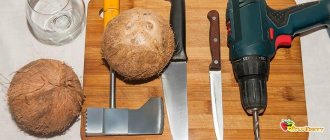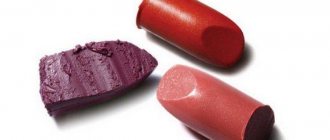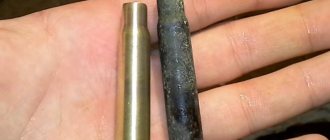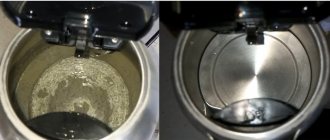The question of how to open a coconut inevitably arises before those who decide to try it for the first time. In tropical countries, where this nutritious fruit is valued for its high calorie content and numerous beneficial properties and is constantly present in the diet, it is opened with a special device that looks like both a drill and a corkscrew. In northern latitudes, the coconut is considered exotic, and such an instrument is difficult to find on sale. Therefore, you will have to use what is at hand.
Cracking a coconut using an oven
This is the classic and most famous method. It will allow you to preserve the good appearance of the shell for subsequent serving as a decoration or decoration. The method is quite simple, it requires an oven and a sharp knife or housekeeper.
Initially, you need to drain the juice from the fruit. If this is not done, it will boil inside the coconut and literally explode the fruit. A lot of pulp and shells will be lost, and the oven will have to be washed thoroughly. Draining coconut juice is very easy. It is necessary to turn the fruit to the side where there are several small indentations, usually the top. It was through them that the coconut fed from the palm tree. Now you should carefully determine the softest place with a sharp knife. It is into this that you need to resolutely go deeper, turning the knife to a depth of 1.5 cm. You can make the task somewhat easier by using a clean screwdriver.
Now you need to quickly turn the coconut over a glass or cup and observe whether the liquid comes out. If the juice begins to drip, then the depression is sufficient and you just have to wait a little. Depending on the fetus, it may take from a few to ten minutes. The volume of juice from one coconut is 120–160 ml. By the way, here you can determine how fresh and suitable the fruit is. If the juice is clear and sweet, then it is the highest grade. A slight cloudiness is still acceptable. If the juice has an oily consistency, it means that the coconut is already spoiled and is not recommended for consumption.
It is better to open the coconut at maximum temperature. The higher it is, the better and faster the fruit will crack. The nut must be placed on the grill, so it will not bake and burn, but will heat up evenly over its entire circumference. Usually 10 minutes is enough. Then you need to pull it out and closely inspect it. You need to find a large crack or several small ones in the shell. If there are none, then heating should continue.
Wrap the cracked coconut in a thin towel or plastic bag and hit the already damaged side on the table several times. The initial crack will be a weak point, causing the shell to crack. Now it is enough to pry it with a knife and open the fruit with swinging movements. The pulp should be peeled until white using a sharp knife or a housekeeper. A whole, undamaged nut is ready to serve. Also, usually the shell splits into 2-3 parts, and it can be used to decorate a dish or table.
Where and how long is the product stored?
You can store coconut for some time without losing its taste, but it is worth remembering that the period depends not only on the temperature, but also on how we purchased it in the store. The coconut may arrive on the counter already too ripe or spoiled.
The opened nut can be placed in the refrigerator, but for no more than 48 hours. It must be stored at a temperature of +5 degrees. If it is lower, the nut will lose its unique taste. At temperatures above +5, coconut begins to rot. When we put it in the refrigerator, we need to make sure that there are no foods that contain ethylene, such as apples or bananas, nearby. These fruits are used to speed up the ripening process of others. You should not experiment with the temperature regime by changing the values. This will only speed up the process of deterioration of the nut. Coconut must be kept at a constant temperature.
The pulp quickly loses moisture after being removed from the peel. Therefore, before placing the coconut in the refrigerator, you need to fill the pulp with water.
Coconut flakes are made from the pulp, or copra in other words. It can be stored not in the refrigerator, but in any dark and cool place. The main thing is to avoid direct sunlight on the product. Preparing the shavings is quite simple.
- Grate the pulp on a fine grater and place on a baking sheet.
- Dry in the oven for 2-3 hours at a temperature not lower than 50 degrees.
- The shelf life if stored correctly is 12 months.
It is better to package the shavings in fabric bags or ceramic jars. You should not use plastic packaging; condensation may accumulate in them over time due to temperature changes in the kitchen. As for storing a whole coconut, a refrigerator or any cool place is suitable for this. At a stable temperature of +5 degrees, the nut can be stored for 2–3 months. As with shavings, it is important to avoid exposure to direct sunlight.
Coconut pulp can be dried in the form of shavings.
Cleaning coconut using the microwave
The technique is as similar as possible to the oven method, but there are certain differences. The main thing is the quality of coconut juice removal itself. It is necessary to drain off as much moisture as possible, and it is recommended to shake the nut several times. This will take about 10 minutes.
Even with proper desiccation, coconut can still explode in the microwave. Therefore, you should put the fruit inside for 2 minutes at maximum power, quickly pull it out and look. If there are no large cracks, then leave for another 40 seconds. And so continue until sufficient damage appears on the shell.
Then wrap the fruit in a bag or thin cloth and apply several blows to the table with the exact side where the crack appeared. The crack is easily pryed with a knife, so the nut opens with the help of rocking movements. After this, all that remains is to clean the pulp. The method takes less time compared to the oven, but the special effect of the microwave slightly bakes the pulp, which slightly changes the taste and aroma of fresh coconut.
Storage rules
In order for purchased nuts to remain fresh as long as possible, they must be stored properly. Macadamia nuts are almost 80% healthy fats. This determines the storage features of the product. For more information about the beneficial properties of the nut, read the article on the benefits of macadamia.
How and how long to store nuts
Nuts in shells last longer, so when buying a product in large quantities, give preference to macadamia nuts in a reliable natural shell. To learn how to remove a whole shell or a cut shell, read our article on how to open a macadamia. The rules and storage conditions for macadamia nuts in shell and without are different.
Read interesting information about this nut: how the king of nuts grows, healthy oil, delicious cookies.
Without shell
Store in glass or clay containers with a tightly closed lid.
This is important, since oxygen causes oxidative processes that contribute to the rapid deterioration of macadamia. The storage location should be dry and dark
At room temperature, macadamia can be stored for 2 months. The nut can be stored in the refrigerator for up to 4 months. If you need longer storage, 6 months or more, freeze the nuts in the freezer.
In a shell with a cut
- Store nuts in airtight containers.
- The storage place should be dry and dark.
- At room temperature, macadamia can be stored for 3 months. Read about how to make an incision on a shell that is as strong as concrete in an article about macadamia production.
- Macadamia nuts in shells are usually not stored in the freezer, because... it takes up a lot of space. Remove the shells and place the nuts in the freezer, where the shelf life will be 6 months or more.
In whole shell
Macadamia nuts stored in whole shells last longer. This is due to the fact that the durable shell reliably protects the core from oxygen and light. Macadamias remain in their shell for up to two years, provided there are no cracks or cuts in it. Should be stored in a dark, dry place at room temperature.
What not to do
The following rules apply to unshelled, cut-shell and whole-shell macadamia nuts.
- First of all, do not store nuts in plastic bags. In them they will quickly lose their benefits, taste and simply deteriorate.
- Do not leave macadamia nuts in direct sunlight. This will speed up the oxidation process. It is better to store in dark places.
- Do not keep nuts in places with high humidity and temperature.
Now you know how to select and store macadamia nuts. I hope this will help you, because the nut has an unusual, very delicate and pleasant taste, and the aroma is reminiscent of vanilla.
Break a coconut with a hammer
This is the most brutal, but quite effective method. There is no need to drain the coconut water; just wrap the fruit in a paper towel and rag. Wrapping should be done carefully; it is advisable to tighten everything so that the fruit is firmly fixed. The wrapped coconut should be placed horizontally on a table or hard surface.
With your left hand you need to firmly hold the end of the fruit, and with your right hand you need to apply sharp blows with a hammer. It's better to hit the center of the coconut. You can also carefully turn the fruit after each blow, this will create a circular crack and the shell will split into two beautiful parts. They can be used to decorate the table or serve a dish. If you hit one point, the nut can break without cracking.
When the fruit cracks or falls into two or three parts under the blows, you should unwrap the towels, move everything under the bowl and open the shell. About 150 ml of liquid will spill out. Now you need to free the pulp from the remnants of the shell. Small pieces can simply be pryed off with a sharp knife. If there are halves or ends, then you should put them on the edge and apply a few more blows with a hammer, but not very hard.
When splitting, you should hold the end of the coconut tightly with your hand, and strike with a hammer at one point, possibly at the pointed end. Then the pulp that has fallen into pieces can be easily removed with a knife.
When knocking out, it is necessary to apply many light blows over the entire area. The goal is for the pulp to peel off from the shell, after which it can be scooped out entirely with a knife or spoon. The pulp still has a thin outer skin and needs to be peeled with a housekeeper or a sharp knife. In general, the method is very fast; an experienced cook completes this procedure in just over a minute. However, it requires skill, experience and some physical strength.
Video:
how to open a coconut in 10 seconds Expand
How to choose a good nut
- The fruit should not have cracks or chips - this is a guarantee that it is not spoiled inside.
- There cannot be any traces of mold on the nut.
- Shake the fruit and listen - a good fruit will make a gurgling sound.
In the pictures we see different coconuts: some are green, they are drunk through a straw, others are fibrous and brown. These are different types of coconut palm fruit, it's a matter of their maturity.
- Green coconut is unripe and contains the most liquid. But it is unlikely that you will be able to buy such a nut in northern latitudes.
- But brown coconuts are fully ripe, but they are very dense, so you need to be smart to open them. In ripe fruits, the pulp is mainly used.
Breaking a coconut with a kitchen mallet
In addition to a construction hammer, you can use a regular kitchen hammer for chops. Moreover, for some, this method is the easiest and fastest to learn. The entire technique is identical to conventional splitting. The only caveat is that it is better to drain the juice, as the pulp will break and the liquid will splash throughout the kitchen.
Draining coconut water is standard. Use a thin knife or screwdriver to pierce the softest of the three indentations, then turn it over into a glass or bowl. Usually about 150 ml of sweet and aromatic water flows down.
Now you can break the fruit. To do this, you need to fix the coconut with one hand and hit it with a chop mallet, the side with large spikes. The most effective technique is to imagine your waist and draw a line from the top to the tip. Using sharp, moderately strong blows, tap this entire waist, moving and turning the coconut. Gradually it will crack exactly and exactly in this place. Another method is to hit one area hard. This can lead to cracking or breaking of the shell and pulp. Excess pieces should be removed and breaking continues, destroying adjacent areas.
Removing the pulp from the inner layer of the shell is done using a sharp knife; it is ideal to use a special one - a fillet knife. It is thin and bends well, so the coconut meat can be easily cut out even from large chips without further destruction.
Stages of preparation for sale
Macadamia comes to stores and supermarkets in a variety of forms:
- Peeled and soaked in aromatic salty spices, such products are often consumed with beer or as a separate snack.
- In the form of candies, which in appearance are a little reminiscent of the familiar chocolate-covered peanuts. The taste of macadamia kernels rolled in chocolate glaze is more pleasant than peanuts, but the price of Australian candies is much higher.
- In a shell with a cut on its surface, such nuts can be sold pure or soaked in aromatic syrup.
Many buyers pay attention that some manufacturers' nuts have a pronounced caramel, chocolate or vanilla flavor. In fact, in preparation for sale, they are kept in special syrups, which not only give the nuts a more pronounced taste and aroma, but also extend their shelf life, because
Once the integrity of the shell is damaged, they deteriorate quite quickly.
Those who want to taste macadamia without foreign odors and tastes are recommended to buy nuts in whole shells without a gap; you can crack them at home using a vice. In this case, you should carefully study the information on the packaging regarding the composition, since some manufacturers soak nuts in shells in syrup. The purchased nuts should look fresh and there should be no stains, mold or other damage on their surface.
Cracking a coconut with a screwdriver
This is a fairly simple method that will allow you to get a fairly presentable nutshell. A wide flat screwdriver or chisel is required. Even a knife or kitchen ax will do, as long as the product is bend-resistant. An ordinary kitchen knife can simply break, also injuring your hand.
It is necessary to drain the juice by punching a hole in the area of three indentations and placing the fruit in a bowl or glass for 5 minutes to allow the water to drain. You can split directly from the same eye. Drive a screwdriver in there at a slight angle and loosen it, enlarging the hole. Next you need to drill a hole nearby, a crack should form. You can use it to split the entire fruit. If you don't rush, you can achieve almost perfect splitting into two parts.
Another way is to feel the seam in the area with three indentations and drive a screwdriver there, loosening the shell at the place where it grows together. The best option to collect the pulp from such pieces is to place the already split coconut in the microwave for 1 minute. Next, use a knife or a specially sharpened strong dessert spoon to pry out the pulp and turn it out. You can make the task somewhat easier if you use a knife to cut it into smaller pieces down to the shell (this will require much less effort).
Video:
how to make butter, milk and shavings from coconut Expand
Shelling and peeling: what's the difference?
First, let's figure out what we are going to clean. The walnut has a tasty and healthy kernel enclosed in two shells:
- Strong and tough shell.
- Green pulp soaked in odorous, caustic and coloring juice.
Important!
The difference in peeling is that in order to crack the shell, a fair amount of mechanical force or cunning is required. But removing the peel is not too difficult, since it is relatively soft, although it fits tightly to the shell of young nuts.
The problem here is different: if you just clean it with your hands, get ready for the fact that very quickly your fingers and palms will first turn khaki, and then a radical black shade. Actually, in the old days, military uniforms were often dyed with just a decoction of the nut - and the dye was quite durable. Therefore, you will either have to work with gloves, or you will need to use some tricks and skills.
Coconut Copra Branch
When everything is done, a snow-white, unlike anything else, inner pulp will open in front of you. This is not exactly the pulp of a fruit or nut; the substance is called copra. It requires separation from the hard peel; you need to be able to do this correctly. Some people scoop it out with a spoon, but copra is a bit harsh and the process is not entirely convenient.
Here's the easiest way.
- Take a knife and carefully move it between the hard shell and the copra. This must be done around the entire perimeter. If the fruit is split into pieces, then manipulate each piece separately.
- Tap half or part of a nut on the table. The copra should now separate on its own.
Advice! When separating the pulp, do not use a knife that is too sharp; this is not necessary, but your hands can be cut. A vegetable peeler or butter knife works best.
Opening a coconut quickly at home is not a problem for people who know the right methods. Based on the advice, even a teenager can handle the job.
Method four: erotic.
This means stripping the coconut, but without using violence, namely slowly and gently: we should get a kind of brown egg, whole and unharmed. How to do it? In order for the coconut flesh to separate itself from the inner walls of the shell, it is necessary to tap the entire surface of the nut. Hold the nut suspended and gently tap it with a blunt object: a light hammer, the handle of a screwdriver or a knife. How do you know when enough is enough? Intuitively. When you think that knocking is enough, do a “control on the head”, that is, knock harder once. Not so desperate that the egg would fall and break, but still enough that the shell would break. Now pry it open with a knife
If your intuition did not let you down, and you really tapped the coconut perfectly, then the first and all subsequent shells will separate without effort, and, most importantly, without damaging the kernel of the nut
As you can see, opening a coconut is not at all difficult. Wishing you pioneering enthusiasm and heavenly pleasure!











